Veganbaking.net
Vegan Baking Recipes
Vegan Baking Recipes
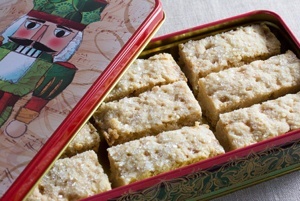 There’s just something about buttery shortbread that’s otherworldly. How does that rich, savory-sweet, toastiness, sweep into your palate with buttery wave after buttery wave? How does it exist with such a crispy texture? That snap when you bite into it unleashes a lingering aroma that takes over you and lets you know that you’ve arrived. Everything is going to be okay now. As long as you don’t hog all the shortbread.
There’s just something about buttery shortbread that’s otherworldly. How does that rich, savory-sweet, toastiness, sweep into your palate with buttery wave after buttery wave? How does it exist with such a crispy texture? That snap when you bite into it unleashes a lingering aroma that takes over you and lets you know that you’ve arrived. Everything is going to be okay now. As long as you don’t hog all the shortbread.I’m pretty picky about my shortbread. I believe it should be a celebration of the flavor of butter. Any other flavors present need only be there to play a supporting role. As you bite in, it should yield with a snap and infuse the senses with buttery richness. But this is vegan baking. How do you do all these things as well as showcase butter?
 Leveraging toastiness can be a powerful tool for creating rich, complex flavors. Toastiness is often defined in dictionaries as “comfortably or cozily warm”. I think it’s pretty cool how this definition describes the actual food flavor so spot-on. When you combine toastiness with coconut, you’d better watch out; you’re in for a burst of rich toastiness with a lingering creamy coconut finish that can fade into maltiness. Perfect for kicking your vegan baking up a notch or three!
Leveraging toastiness can be a powerful tool for creating rich, complex flavors. Toastiness is often defined in dictionaries as “comfortably or cozily warm”. I think it’s pretty cool how this definition describes the actual food flavor so spot-on. When you combine toastiness with coconut, you’d better watch out; you’re in for a burst of rich toastiness with a lingering creamy coconut finish that can fade into maltiness. Perfect for kicking your vegan baking up a notch or three!Why confine toasted coconut to coconut flour? By making coconut milk out of toasted coconut flour, we’re able to apply this rich, complex creamy toastiness to a much wider array of vegan baking applications. Ice creams, cakes, puddings, cream sauces, pancakes; any food that uses a large proportion of liquid can take advantage of toasted coconut milk in place of regular non-dairy milk. You can even put it in your breakfast oatmeal where it’ll add a rich, savory maltiness. But how does this flavor come to be?
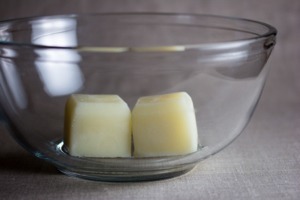 Shortening definitely has its place in vegan baking. From pie crusts, shortbreads and puff pastry, it’s a basic building block for texture. This solid fat is so integral to these types of desserts because it alters the way gluten is formed in baked items that utilize wheat-based flours. For more on the food science of shortening, check out my article on how to make vegan shortening.My original recipe for vegan shortening utilized a mixture of coconut oil and vegetable oil such as canola, light olive oil or rice bran oil. The coconut oil is solid at room temperature. When it’s mixed with a certain ratio of fats that are liquid at room temperature, a certain level of softness can be dialed in that makes it suitable to use as shortening. This recipe utilizes deodorized, also known as refined cocoa butter.
Shortening definitely has its place in vegan baking. From pie crusts, shortbreads and puff pastry, it’s a basic building block for texture. This solid fat is so integral to these types of desserts because it alters the way gluten is formed in baked items that utilize wheat-based flours. For more on the food science of shortening, check out my article on how to make vegan shortening.My original recipe for vegan shortening utilized a mixture of coconut oil and vegetable oil such as canola, light olive oil or rice bran oil. The coconut oil is solid at room temperature. When it’s mixed with a certain ratio of fats that are liquid at room temperature, a certain level of softness can be dialed in that makes it suitable to use as shortening. This recipe utilizes deodorized, also known as refined cocoa butter.
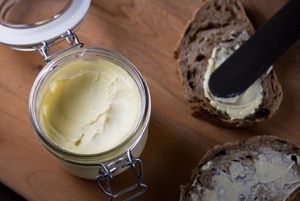 I've gotten into the habit of using various Vegan Butters in my baking projects. I like having the peace of mind in knowing I have complete control over what goes into it. These butters were designed to mimic real butter. But lately I’ve been noticing something. The same hard consistency that allows the butter to work well with creaming into cookie batter, cutting into pie crust dough and rolling with croissant dough can also be its downfall.
I've gotten into the habit of using various Vegan Butters in my baking projects. I like having the peace of mind in knowing I have complete control over what goes into it. These butters were designed to mimic real butter. But lately I’ve been noticing something. The same hard consistency that allows the butter to work well with creaming into cookie batter, cutting into pie crust dough and rolling with croissant dough can also be its downfall.This firmness inhibits the butter from being enjoyed on a completely different level: being spread onto toasty pieces of hearth breads, smeared on steamy biscuits and dabbed on pancakes fresh off the griddle. In these cases, butters that are optimal for baking tend to sit on the food, desperately depending on the residual heat to allow them to melt so they hopefully spread out as they ooze along. Then while you’re eating, hopefully you’ll eventually get to the part with the melted butter on it. What a treat that’s going to be! It shouldn’t have to be this way.
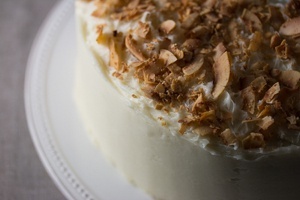 Coconut is one of my favorite ingredients due to its neutral flavors that add richness to almost anything. Coconut contains flavor compounds called lactones that are among the same flavor compounds that give traditional dairy cream its trademark creamy flavor. And we all wondered why coconut and cream went together so well! In this Toasted Coconut Cake I wanted to maximize these layers of coconut and cream for a truly decadent cake.
Coconut is one of my favorite ingredients due to its neutral flavors that add richness to almost anything. Coconut contains flavor compounds called lactones that are among the same flavor compounds that give traditional dairy cream its trademark creamy flavor. And we all wondered why coconut and cream went together so well! In this Toasted Coconut Cake I wanted to maximize these layers of coconut and cream for a truly decadent cake.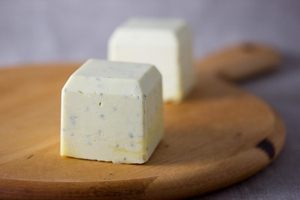 What I like best about Vegan Butter is how it can be crafted to meet your exact flavor and texture specifications. Since we’re building butter from the ground up, we have the freedom to use building blocks that contribute almost any quality we desire. In that roughly 80% fat and 20% water, we have lots of room to play around. For this version I wanted to showcase the unbelievably smooth, savory flavors of truffle oil for a Vegan Butter that could stand up to traditional dairy-based butter as a bread spread, or even quite possibly outdo it when baked into pastry such as savory pie crusts. But why are we infusing vegan butter with truffle oil? Let’s get some background information on what truffle oil brings to the table.
What I like best about Vegan Butter is how it can be crafted to meet your exact flavor and texture specifications. Since we’re building butter from the ground up, we have the freedom to use building blocks that contribute almost any quality we desire. In that roughly 80% fat and 20% water, we have lots of room to play around. For this version I wanted to showcase the unbelievably smooth, savory flavors of truffle oil for a Vegan Butter that could stand up to traditional dairy-based butter as a bread spread, or even quite possibly outdo it when baked into pastry such as savory pie crusts. But why are we infusing vegan butter with truffle oil? Let’s get some background information on what truffle oil brings to the table.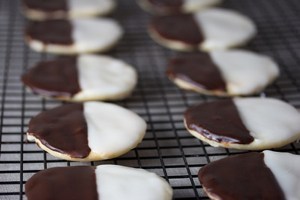 “I’ve never had a black and white cookie before” I mumbled to my vegan food friends, not thinking that it was that big of a deal. “Living in New York City, you’ve never had a black and white cookie?!” they desperately exclaimed. Right then, I perked up. What is it about these flat perfectly looking cookies that straddle the line between black and white so mysteriously? After all, this is New York City’s cookie. Does this cookie dare to celebrate chocolate and vanilla at the same time? What about the cookie part? Is it just a boring pseudo shortbread crust underneath or something special? I had to know more.
“I’ve never had a black and white cookie before” I mumbled to my vegan food friends, not thinking that it was that big of a deal. “Living in New York City, you’ve never had a black and white cookie?!” they desperately exclaimed. Right then, I perked up. What is it about these flat perfectly looking cookies that straddle the line between black and white so mysteriously? After all, this is New York City’s cookie. Does this cookie dare to celebrate chocolate and vanilla at the same time? What about the cookie part? Is it just a boring pseudo shortbread crust underneath or something special? I had to know more.
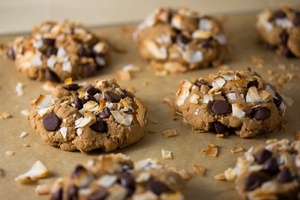 I decided to assemble Team Coconut: an all-star team of players dedicated to bringing in some serious coconut action. Like a Quiet Riot - Bang Your Head (on the Coconut) remix. Based on my Vegan Chewy Chocolate Chip Cookie recipe, Vegan Toasted Coconut Chocolate Chip Cookies boast toasted coconut flour, unrefined coconut oil, coconut sugar and shredded coconut that toasts during baking. Let’s do this.
I decided to assemble Team Coconut: an all-star team of players dedicated to bringing in some serious coconut action. Like a Quiet Riot - Bang Your Head (on the Coconut) remix. Based on my Vegan Chewy Chocolate Chip Cookie recipe, Vegan Toasted Coconut Chocolate Chip Cookies boast toasted coconut flour, unrefined coconut oil, coconut sugar and shredded coconut that toasts during baking. Let’s do this.
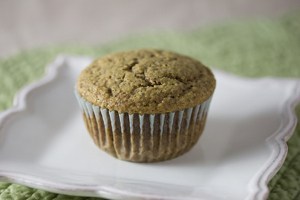 I love how green tea has a subtle ability to refresh coupled with a slight hint of savoriness. I adore how vegan cupcakes can be a celebratory canvas for almost any flavor combination, that you get to just pick up and take a bite out of. But how do you infuse green tea into a baked cake product? Easy, right?
I love how green tea has a subtle ability to refresh coupled with a slight hint of savoriness. I adore how vegan cupcakes can be a celebratory canvas for almost any flavor combination, that you get to just pick up and take a bite out of. But how do you infuse green tea into a baked cake product? Easy, right?
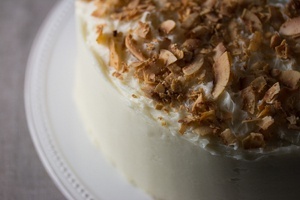 This Easy Vegan Buttercream Frosting is just a simple, versatile, delectable frosting that will elevate your cakes and cupcakes to a new level without requiring you to put on your lab coat and don your frosting goggles. You can either use Regular Vegan Butter with a cocoa butter base which is recommended, Regular Vegan Butter with a coconut oil base, or, if you haven’t gotten around to buying a walk-in freezer to store your Vegan Butter in yet, go the easy route and use store bought stick margarine.
This Easy Vegan Buttercream Frosting is just a simple, versatile, delectable frosting that will elevate your cakes and cupcakes to a new level without requiring you to put on your lab coat and don your frosting goggles. You can either use Regular Vegan Butter with a cocoa butter base which is recommended, Regular Vegan Butter with a coconut oil base, or, if you haven’t gotten around to buying a walk-in freezer to store your Vegan Butter in yet, go the easy route and use store bought stick margarine.
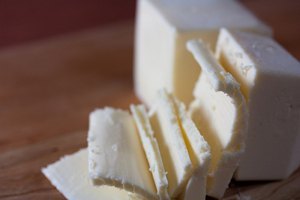 When I originally developed my first Vegan Butter recipe I had no idea it would be helpful to so many bakers. I just wanted something that was truly homemade where I had full control of the production process so I could introduce variations to tailor the vegan butter to the application I was working on. Other advantages were that it didn't need to rely on palm oil, which much of the commercial vegan butter industry utilizes, which is linked to rainforest destruction, as well as placing Sumatra orangutans in perilous danger.
When I originally developed my first Vegan Butter recipe I had no idea it would be helpful to so many bakers. I just wanted something that was truly homemade where I had full control of the production process so I could introduce variations to tailor the vegan butter to the application I was working on. Other advantages were that it didn't need to rely on palm oil, which much of the commercial vegan butter industry utilizes, which is linked to rainforest destruction, as well as placing Sumatra orangutans in perilous danger. The original Vegan Butter recipe uses refined coconut oil for a base, but what happens if there begins to be environmental issues with that type of oil? What if it's difficult to find coconut oil in your area? What if you recently had a dump truck empty 3500 pounds of deodorized cocoa butter in your driveway and you're wondering what to do with it? I don't know which one of these issues led to this, but soon after posting the first Vegan Butter recipe, people started inquiring how to make it using cocoa butter instead of coconut oil.
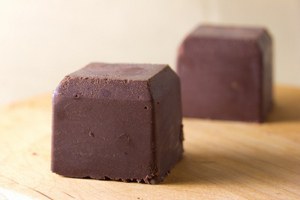 One of the benefits of Vegan Butter is that since you’re building it up from scratch, you can have full control of what you want it to be. It doesn’t have to go down the route of completely replicating traditional butter if you don’t want it to. Why would you want to replicate the texture of butter but not necessarily the flavor? Frostings and short doughs such as tart dough, pie crust and shortbread come to mind. You have much more variability in your end result if you can control flavor through your actual fat in addition to other ingredients. Imagine chocolate croissants where the butter is replaced with a fat that has the texture and flavor characteristics of both chocolate and butter. This is the reason I developed Chocolate Vegan Butter. Oh and you can spread it on toast too.
One of the benefits of Vegan Butter is that since you’re building it up from scratch, you can have full control of what you want it to be. It doesn’t have to go down the route of completely replicating traditional butter if you don’t want it to. Why would you want to replicate the texture of butter but not necessarily the flavor? Frostings and short doughs such as tart dough, pie crust and shortbread come to mind. You have much more variability in your end result if you can control flavor through your actual fat in addition to other ingredients. Imagine chocolate croissants where the butter is replaced with a fat that has the texture and flavor characteristics of both chocolate and butter. This is the reason I developed Chocolate Vegan Butter. Oh and you can spread it on toast too.
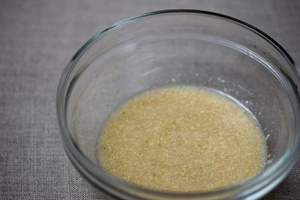 Traditional bakers have been able to create a vast variety of foods over the last several hundred years of baking evolution. It’s surprising when you realize that everything from puddings to cakes to cookies vary little in the range of ingredients used. Versatile ingredients such as flour, sugar, fat and eggs make this sort of variation possible. These are the building blocks of pastry. Vegan baking is easy when all you have to worry about is manipulating flour, sugar and fat. So what are we do to do in regards to replacing the almighty egg? There is a legend that the Romans believed in chicken eggs so much, they mixed them into their concrete. To first understand what we need to replicate this building block we need to understand what an egg does in the world of baking.
Traditional bakers have been able to create a vast variety of foods over the last several hundred years of baking evolution. It’s surprising when you realize that everything from puddings to cakes to cookies vary little in the range of ingredients used. Versatile ingredients such as flour, sugar, fat and eggs make this sort of variation possible. These are the building blocks of pastry. Vegan baking is easy when all you have to worry about is manipulating flour, sugar and fat. So what are we do to do in regards to replacing the almighty egg? There is a legend that the Romans believed in chicken eggs so much, they mixed them into their concrete. To first understand what we need to replicate this building block we need to understand what an egg does in the world of baking.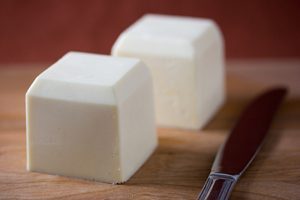 The more I learn about pastry, the more I realize that European pastry is on a completely different level compared to classic American pastry. My impression is that European pastry is all about introducing flavor depth through manipulating eggs, butter and technique. Croissants, strudel and danish pastries come to mind. American pastry, on the other hand, tends to build off bold flavors with a strong sugar backbone accentuated by spices. Apple pie, cupcakes and cookies come to mind here.
The more I learn about pastry, the more I realize that European pastry is on a completely different level compared to classic American pastry. My impression is that European pastry is all about introducing flavor depth through manipulating eggs, butter and technique. Croissants, strudel and danish pastries come to mind. American pastry, on the other hand, tends to build off bold flavors with a strong sugar backbone accentuated by spices. Apple pie, cupcakes and cookies come to mind here. In the quest to become an adept baker, it’s important to draw from as many influences as possible. One trick that many American style bakers use to improve flavor depth is taking a cue from European bakers by using cultured European style butter.
How does American style butter differ from European style butter? Let’s take a look.
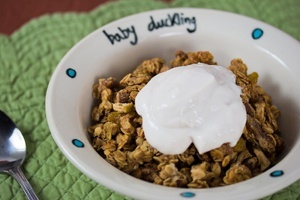 This Vegan Apple Pecan Granola recipe brings on the apple flavor with the help of both apple chunks and apple sauce. Cashew butter forms its base and packs extra protein so you'll have sustained energy throughout your morning. I go low on the sugar for this same reason and to give the other ingredients a chance to contribute flavor. Nutmeg, allspice and cinnamon work to highlight the apple. Chopped pecans toast during baking and add a welcome nutty crunch. Once you've chosen your preferred apples and baked this granola to perfection you can add it to ice cream, splash it on non-dairy milk or top it with a dollop of non-dairy yogurt.
This Vegan Apple Pecan Granola recipe brings on the apple flavor with the help of both apple chunks and apple sauce. Cashew butter forms its base and packs extra protein so you'll have sustained energy throughout your morning. I go low on the sugar for this same reason and to give the other ingredients a chance to contribute flavor. Nutmeg, allspice and cinnamon work to highlight the apple. Chopped pecans toast during baking and add a welcome nutty crunch. Once you've chosen your preferred apples and baked this granola to perfection you can add it to ice cream, splash it on non-dairy milk or top it with a dollop of non-dairy yogurt.


